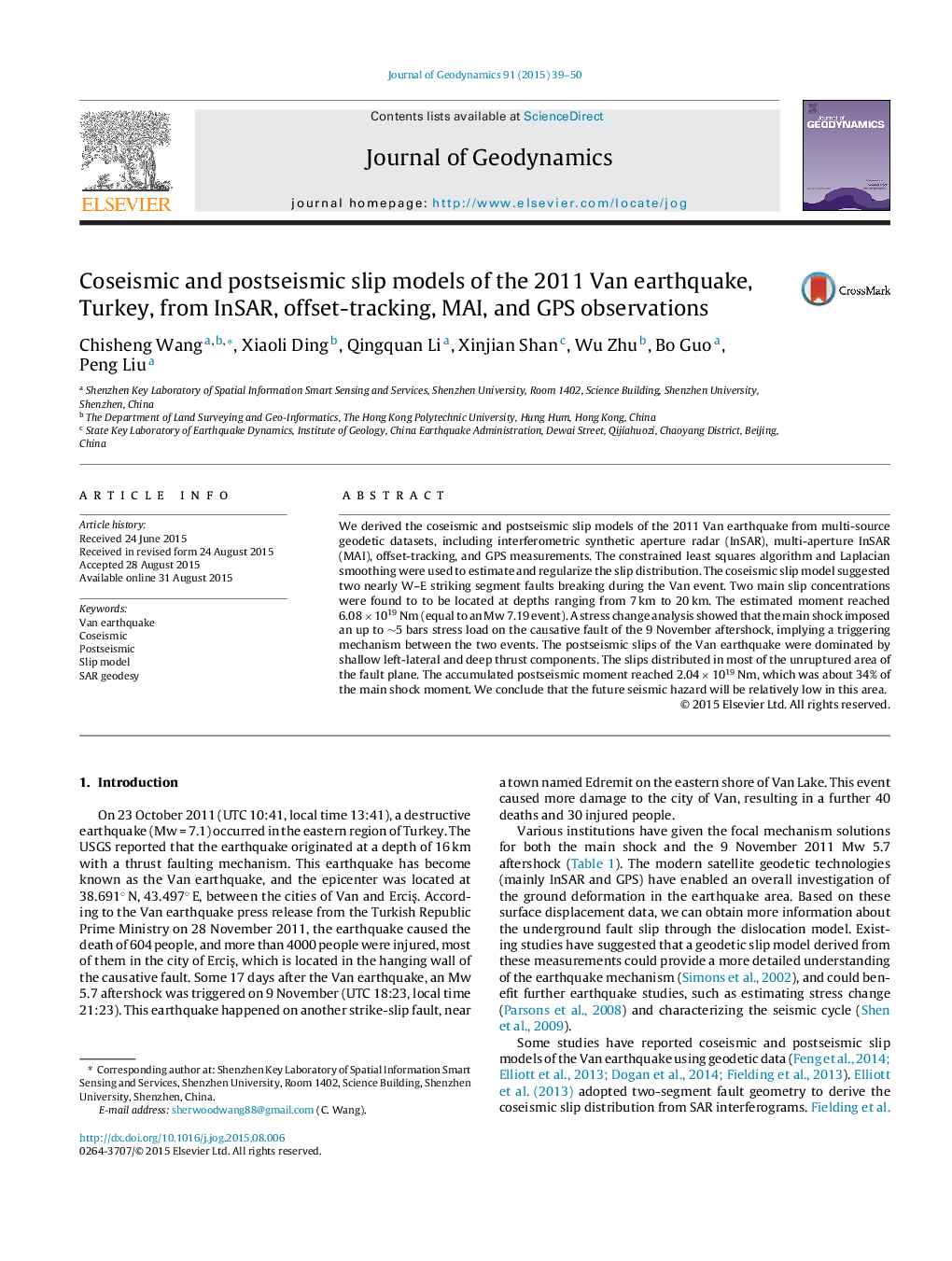| Article ID | Journal | Published Year | Pages | File Type |
|---|---|---|---|---|
| 4687994 | Journal of Geodynamics | 2015 | 12 Pages |
•We derive coseismic surface deformation of Van earthquake from multi-source measurements.•We give coseismic and postseismic slip models of the Van earthquake.•We conclude the remote 9 November Mw 5.7 event is a result of the static Coulomb stress increase.•We conclude seismic hazard in recent future will be low in this area.
We derived the coseismic and postseismic slip models of the 2011 Van earthquake from multi-source geodetic datasets, including interferometric synthetic aperture radar (InSAR), multi-aperture InSAR (MAI), offset-tracking, and GPS measurements. The constrained least squares algorithm and Laplacian smoothing were used to estimate and regularize the slip distribution. The coseismic slip model suggested two nearly W–E striking segment faults breaking during the Van event. Two main slip concentrations were found to to be located at depths ranging from 7 km to 20 km. The estimated moment reached 6.08 × 1019 Nm (equal to an Mw 7.19 event). A stress change analysis showed that the main shock imposed an up to ∼5 bars stress load on the causative fault of the 9 November aftershock, implying a triggering mechanism between the two events. The postseismic slips of the Van earthquake were dominated by shallow left-lateral and deep thrust components. The slips distributed in most of the unruptured area of the fault plane. The accumulated postseismic moment reached 2.04 × 1019 Nm, which was about 34% of the main shock moment. We conclude that the future seismic hazard will be relatively low in this area.
